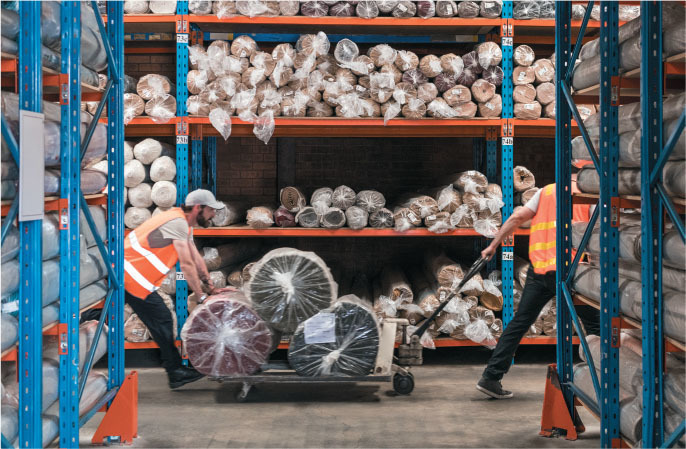Product Spotlight: ICWM
 When choosing casters for material handling equipment, manufacturers sometimes are surprised to learn that there are thousands of different options, and many factors go into selecting the right one, including ergonomics.
When choosing casters for material handling equipment, manufacturers sometimes are surprised to learn that there are thousands of different options, and many factors go into selecting the right one, including ergonomics.
Narrowing down those options can seem overwhelming, but the Institute of Casters and Wheels Manufacturers, an MHI Industry Group, helps companies pair the right casters and wheels with the right industrial application.
“The reason we have all these different kinds of wheels is because there are so many different needs out there,” said Dave Lippert, president of ICWM and MHI member Hamilton Caster, a caster manufacturer. “There are a lot of different characteristics and criteria involved.”

Lippert said choosing the wrong caster can contribute to workplace injuries, including strained muscles in the shoulders, back and arms. Pushing and pulling heavy loads is one of the most common ways employees get hurt, especially when they perform those tasks repetitively, according to the U.S. Department of Labor.
With labor in short supply, manufacturing plants, warehouses and distribution centers can’t afford to have workers sidelined. As the American workforce continues to age, employees typically become more prone to injury, making ergonomics an increasingly important part of product selection.
Casters are the No. 1 way to improve ergonomics on any cart by reducing push/pull stress, or the amount of pound force, required to push or pull the cart, according to Scott Fisher, director of transportation vertical markets for ICWM and MHI member Colson Group, also a caster manufacturer. The top three ways to improve ergonomics with casters is to use wheels with the largest diameter possible, the hardest wheels possible and the best bearings possible, he added.
“Caster manufacturers test casters and wheels to define the best ergonomic solutions for each job requirement,” Fisher explained.
The load capacity of casters is one of the most important selection criteria, Lippert said. A common mistake is “under-buy” casters—selecting wheels with just enough load capacity for the job, he added. In a simple example, if a cart and its contents will total 1,000 pounds, a manufacturer might select four casters that each can support 250 pounds. But by cutting it too close, manufacturers diminish the durability and performance of their products.
Floors aren’t always perfectly smooth and flat, and the cart’s contents may not be evenly distributed in terms of weight. So, in the aforementioned example, there will be times when individual casters are made to bear more than their maximum capacity of 250 pounds, which can lead to premature failure of the equipment, Lippert said.
There’s also the problem of “shock loading,” when casters hit a bump, ledge, dock leveler or other obstruction, creating a jarring effect that can damage or break casters, Lippert said. Over time, that impact can amount to “wheel abuse” that greatly shortens the lifespan of casters, he added.
Casters are made from a variety of materials, including rubber, stainless steel, metal, nylon and polyurethane. Choosing wheels that are larger and harder will reduce the amount of force that workers must apply to get a cart moving and keep it in motion.
To illustrate this concept, Lippert said it’s helpful to think of pedaling a bike. The larger the wheels, the easier it will be to pedal. Similarly, tires that are properly inflated are harder and therefore will make it easier to pedal than tires that are nearly flat.
 MHI Solutions Improving Supply Chain Performance
MHI Solutions Improving Supply Chain Performance